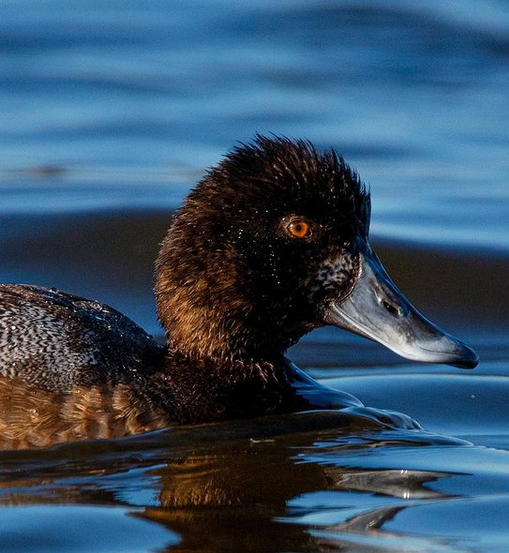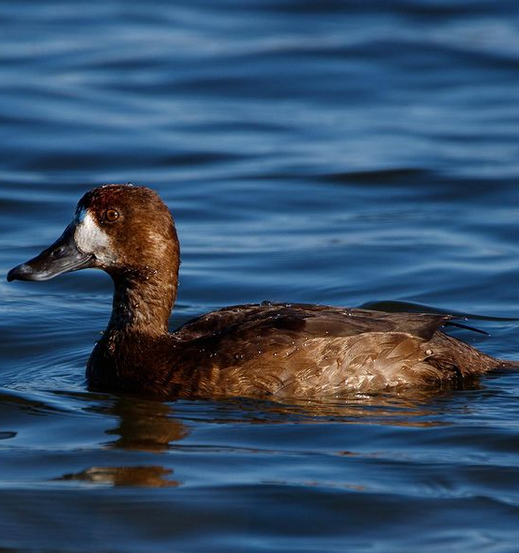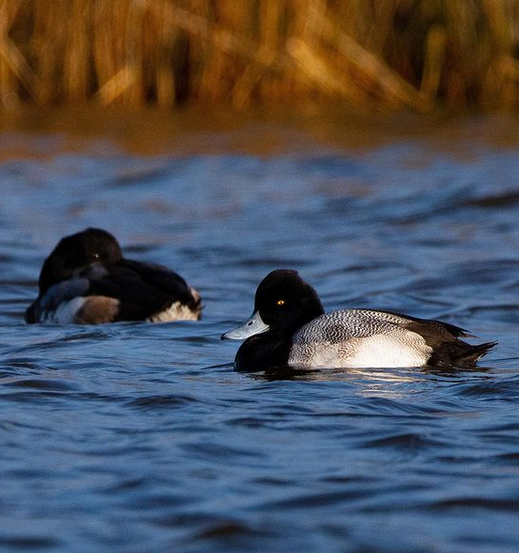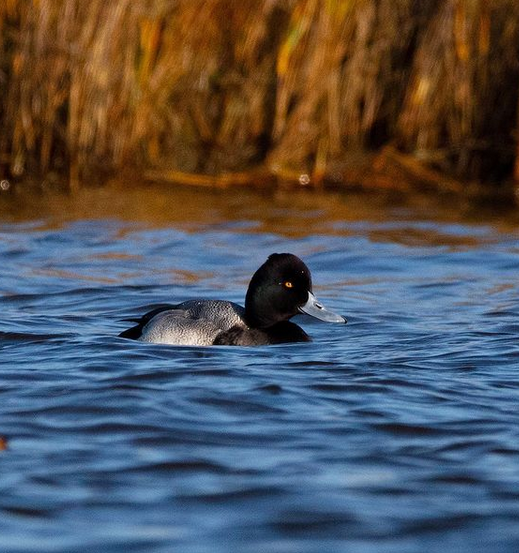Here’s a lovely duck that doesn’t get enough love in my opinion, the Lesser Scaup. I spotted these beautiful creatures while birding at the Pea Island NWR last month.
Aren’t they sweet?
The drakes (featured in the first few photos) have white flanks, black rumps and breasts, and lined gray backs.
They’ve got purplish-black, iridescent heads and bright yellow eyes. Their bills are light gray-blue. Males in non-breeding plumage have black heads and breasts, brown bodies, and black rumps.
The hens (featured above) are brownish colored overall, also with beautiful yellow eyes, and white at the base of their bills.
It was lovely to watch them as they glided across the pond in search of a meal.
Scaups aren’t showy but gosh I enjoy seeing them each winter. There are actually two species of Scaup found in North Carolina, the Lessers & Greater. These two varieties look similar but there are a few differences to note when trying to make an accuarte ID.
Lesser:
Smaller overall size
Peak of feathers sticking up on it’s crown
Narrow-ish head with tall slender neck
Black tip on bill is noticeably smaller
Prefers to stick to freshwater bodies of water inland
Greater:
Larger size Rounded crown
Rounder head & puffy-ish cheeks
Black tip larger and more noticeable on bill
Is generally more abundant in saltwater bodies of water
The thing is, even if though I know what ID marks to look for, it’s still tough when viewing these guys at a distance. It’s easier when the two species are right up next to one another (because of the size difference) but beyond that it’s all about going over the details.
Every October, large flocks of Lesser Scaups make their way south into North Carolina. Though they may be found all across the state, their more commonly seen in our eastern coastal areas swimming on lakes, reservoirs, and fresh or brackish coastal bays and estuaries.
The diet of the Scaup is largely made up of seeds, insects, aquatic invertebrates, minnows, fish eggs and small crustaceans. During the winter, Mollusks and plant seeds become more important at other times of the year due to the scarcity of insects and fish roe.
If you’re able to sit and observe them for a few minutes, you’re likely to see them diving underwater for their meal.
Sometimes they seem to stay down there for a while which is pretty impressive.
I’m headed back to Pea Island for another birding trip soon. I can’t wait to see these sweet little ducks again and am hoping that I’ll be able to get some photos of the Scaups in better light.
By the way, the Lesser Scaups will hang out here in North Carolina until late April (western part of the state) or early May so there is plenty of time for you to go see a few for yourself too!
Photos by @sally_siko of @birdwatching_nc on the fabulous full frame @canonusa
#5Ds






